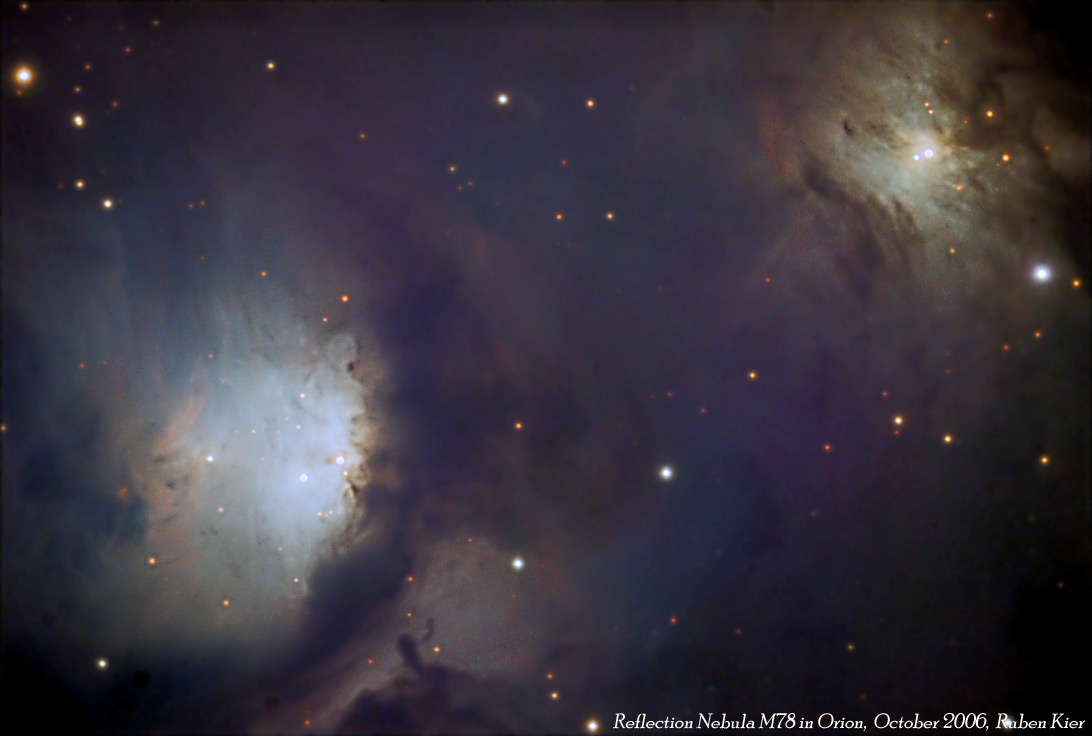| Reflection Nebulae M78 and NGC 2071 in Orion |
At the begining of known time, the Big Bang spread mostly hydrogen and some helium into the early universe. These gases condensed into the
giant luminous stars that populated young galaxies, burning brightly yet briefly, barren of planets, dying violently in the cataclysm of supernova
explosions. These blasts created the heavier elements, producing the wide expanses of interstellar dust that drift among the Milky Way's spiral
arms. Other gravitation interactions condense this dust and gas into newer generations of stars, in which some of the dust condenses into planets
like Earth.
The Nebulae M78 (left) and NGC 2071 (right) are two concentrations of interstellar dust. Unlike the red "emission" nebula that shine red from
energized hydrogen gas, these "reflection" nebulae dimly reflect the blue light of nearby young stars. The other various colors indicate some
components of hydrogen and other gases that are excited to higher energy states, which then glow dimly. These nebulae are part of the vast Orion
Complex of dust and gas, 1,600 light years away, that is centered on the Orion Nebula M42.
This image combined 60 minutes of luminance with 30 minutes of red, 25 minutes green and 30 minutes of blue exposures, all binned 2x2. An
ST10XME camera was used through a Meade 12" LX200R and an AP reducer at the Hidden Lake Observatory.
giant luminous stars that populated young galaxies, burning brightly yet briefly, barren of planets, dying violently in the cataclysm of supernova
explosions. These blasts created the heavier elements, producing the wide expanses of interstellar dust that drift among the Milky Way's spiral
arms. Other gravitation interactions condense this dust and gas into newer generations of stars, in which some of the dust condenses into planets
like Earth.
The Nebulae M78 (left) and NGC 2071 (right) are two concentrations of interstellar dust. Unlike the red "emission" nebula that shine red from
energized hydrogen gas, these "reflection" nebulae dimly reflect the blue light of nearby young stars. The other various colors indicate some
components of hydrogen and other gases that are excited to higher energy states, which then glow dimly. These nebulae are part of the vast Orion
Complex of dust and gas, 1,600 light years away, that is centered on the Orion Nebula M42.
This image combined 60 minutes of luminance with 30 minutes of red, 25 minutes green and 30 minutes of blue exposures, all binned 2x2. An
ST10XME camera was used through a Meade 12" LX200R and an AP reducer at the Hidden Lake Observatory.
Music: Beethoven's Moonlight Sonata
